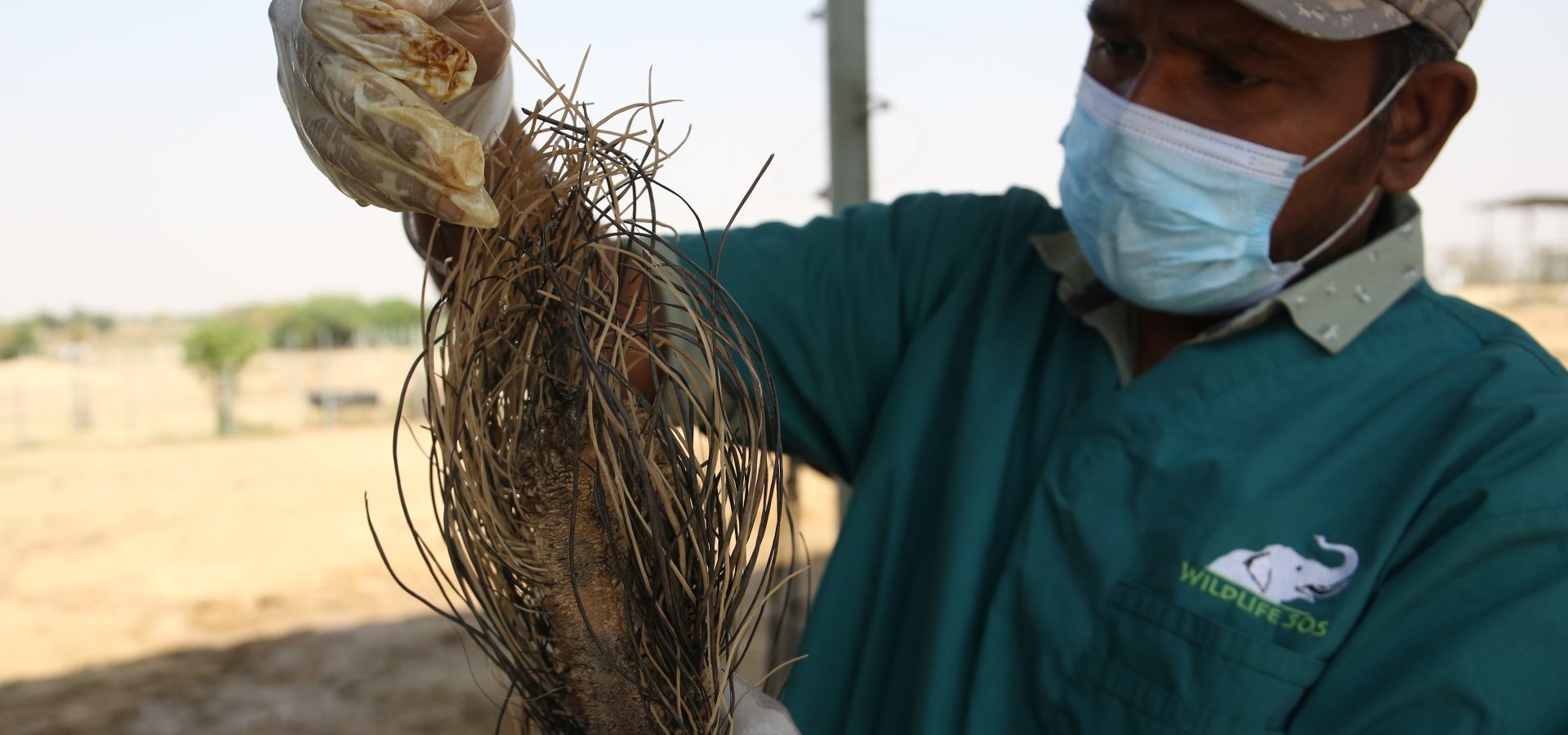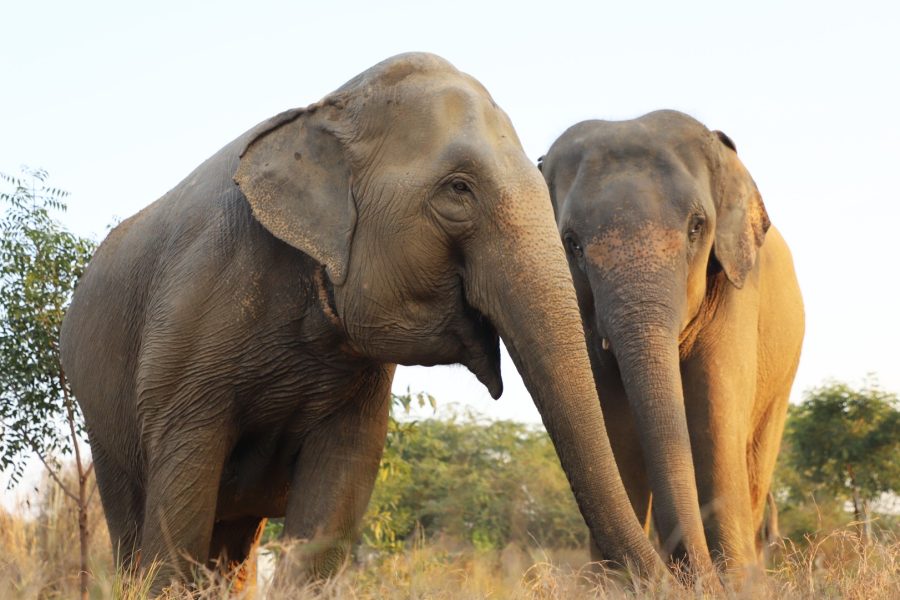Elephants under the care of Wildlife SOS suffer from trauma and wounds due to their tragic past of cruelty and abhorrent living conditions. Long periods of negligence, limited space for movement, little or no veterinary care and malnutrition lead to bodily harm. Elephants are found with various physical injuries such as infected wounds, abscesses, cracked footpads and toenails, sunken temples, protruding spine and lacerations.

Most elephants rescued from captive conditions suffer from gashes and wounds on their tails. These injuries require constant medical attention.
An elephant swishes its tail involuntarily to thwart flies and bugs. The instinctive use of a tail by an animal is due to the parasympathetic nervous system which controls bodily functions even when the animal is resting. It is similar to the reflexive, gestural response of humans to shoo away a mosquito. While trunks of an elephant monitor the frontal part of their body, tails cover the posterior effectively.

When Raju arrived at the Elephant Hospital, our veterinarians noted that he had injuries on his tail which needed urgent treatment. Raju’s owner would tie his tail to an iron pole, thus hindering its movement and use. Raju couldn’t use his tail to ward off flies or bugs. The pole rusted, and so, the tail developed gangrenous wounds. This happens to most elephants that are kept under horrifying captivity. The injured tail requires resting time to heal. However, while it heals, the skin on the tail stretches, leading to an itching sensation. To quell this irritation, Raju unintentionally hits his tail against the girders surrounding the enclosure. This causes constant rupture to tissues in that particular region, making the tail’s recovery slower.
An adequate amount of rest and relaxation of Raju’s tail will allow for the cells to heal. Even though his tail has been able to recover considerably from how it was earlier, ongoing monitoring and treatment are required. The veterinarians consistently perform dry dressing on the tail injury with a cotton bandage.

Another reason for sustaining injuries on the tail is the absence of tail hair. Tail hair (also called switch) are shock absorbers whenever the tail hits a rough spot. In Raju’s case, his tail is devoid of hair since his owner had plucked them and sold them illegally. Trade of elephant skin and other body parts are strictly banned under the Wildlife (Protection) Act, 1972. The dry dressing on Raju’s tail acts as a layer of protection and compensates for the absence of hair.
At the Elephant Conservation and Care Centre, our grand old bull Bhola is currently undergoing treatments for abscesses on his hip and for his tail as well. During last year’s winter, the tip of Bhola’s tail had dried up due to the colder temperatures. This happened due to irregular blood supply, causing the tip of the tail to slough off. Our veterinarians have been carefully disinfecting his tail wounds with turmeric powder and herbal medicines.

Bhola was rescued nearly 11 years ago after becoming a victim of a tragic truck collision in which he lost his vision. Due to Bhola’s lost eyesight, the elephant care staff has also installed cushioned edgings in his enclosure, allowing him to walk without hurting his tail.
Both physical and mental well-being of elephants require expertise in care and building a bond of trust with the animals. Our elephant care staff and veterinary team toil to achieve this for the rescued elephants with cognitive treatments for each wound the elephants suffers from.
There are instances of elephants who sustained tail injuries due to negligence while being kept in captive conditions before their rescue. When Arya arrived at the Elephant Hospital, she received continuous treatment for abscesses at the base of her tail. Since she was forced to walk during smouldering summers, bone-chilling winters and torrential downpours, the rope around her tail would cut through her flesh, and she developed infected wounds at the base of her tail. With regular cleaning and dressing by our team, her tail wounds eventually healed well.

In a similar instance, the Wildlife SOS team first found Suraj restrained by spiked chains in a temple. His body was covered with bullhook wounds, and his tail injured and untreated. Our veterinarians tended to his wounds by applying herbal medicine and with consistent dressings. This ultimately led to the complete recovery of the tail.

Our dedicated team of veterinarians put every ounce of their energy to care for these gentle giants and provide them with the best treatment. These elephants are able to live a deserving and happy life largely due to the dedicated efforts of our veterinarians. You too can support us by becoming a monthly donor for the care and upkeep of our rescued animals.





